RNA: Ribonucleic Acid
RNA, or ribonucleic acid, is a molecule that plays a crucial role in the process of protein synthesis in living organisms. It is a single-stranded molecule that is made up of a long chain of nucleotides. RNA is essential for the transmission of genetic information from DNA to the protein synthesis machinery in the cell.
Types of RNA
There are several types of RNA, each with specific functions:
- Messenger RNA (mRNA): carries genetic information from the DNA in the nucleus to the ribosomes in the cytoplasm, where proteins are synthesized.
- Transfer RNA (tRNA): brings amino acids to the ribosomes during protein synthesis, ensuring that the correct amino acids are incorporated into the growing protein chain.
- Ribosomal RNA (rRNA): a major component of ribosomes, the cellular machinery responsible for protein synthesis. It helps in the binding of mRNA and tRNA during translation.
Functions of RNA
RNA performs several important functions in the cell:
- Transcription: RNA is involved in the process of transcribing the genetic information from DNA into mRNA.
- Translation: RNA plays a key role in translating the genetic code carried by mRNA into the sequence of amino acids that make up proteins.
- Regulation: Some types of RNA, such as microRNA (miRNA) and small interfering RNA (siRNA), are involved in regulating gene expression by controlling the stability and translation of mRNA.
Study Guide
To study RNA effectively, consider the following key points:
- Understand the structure of RNA and its differences from DNA.
- Learn the specific functions of each type of RNA (mRNA, tRNA, rRNA).
- Study the processes of transcription and translation and the role of RNA in these processes.
- Explore the regulatory functions of RNA, including the roles of miRNA and siRNA.
- Practice identifying the different types of RNA and their functions in the context of protein synthesis.
By mastering the concepts and functions of RNA, you will gain a deeper understanding of how genetic information is transmitted and utilized within living organisms.
[Rna] Related Worksheets and Study Guides:
.◂Science Worksheets and Study Guides Second Grade. The sun and earth
Study Guide The sun and earth
The sun and earth  Activity Lesson
Activity Lesson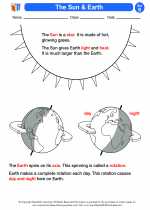 The Sun & Earth
The Sun & Earth  Worksheet/Answer key
Worksheet/Answer key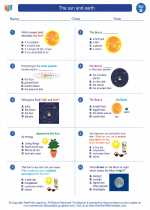 The sun and earth
The sun and earth  Worksheet/Answer key
Worksheet/Answer key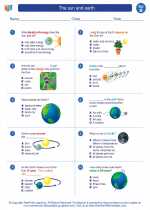 The sun and earth
The sun and earth  Worksheet/Answer key
Worksheet/Answer key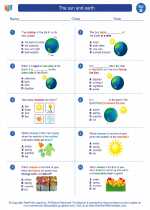 The sun and earth
The sun and earth  Worksheet/Answer key
Worksheet/Answer key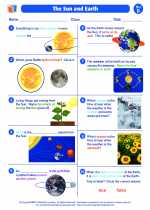 The Sun and Earth
The Sun and Earth  Vocabulary/Answer key
Vocabulary/Answer key The sun and earth
The sun and earth 

 Activity Lesson
Activity Lesson
 Worksheet/Answer key
Worksheet/Answer key
 Worksheet/Answer key
Worksheet/Answer key
 Worksheet/Answer key
Worksheet/Answer key
 Worksheet/Answer key
Worksheet/Answer key
 Vocabulary/Answer key
Vocabulary/Answer key

The resources above cover the following skills:
Concepts of Earth Science: A student should understand and be able to apply the concepts, processes, theories, models, evidence, and systems of earth and space sciences. A student who meets the content standard should:
Develop an understanding of the cyclical changes controlled by energy from the sun and by Earth's position and motion in our solar system.